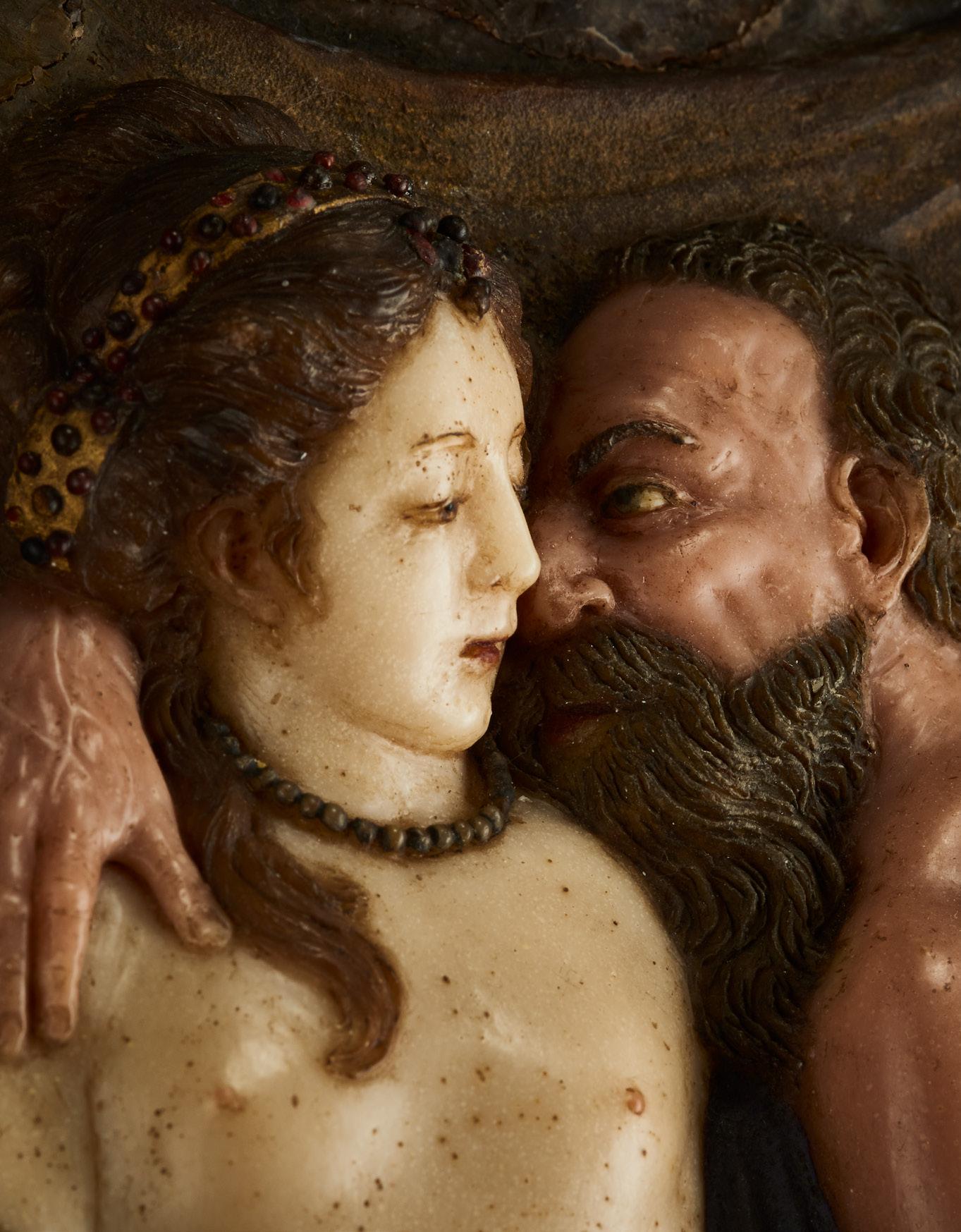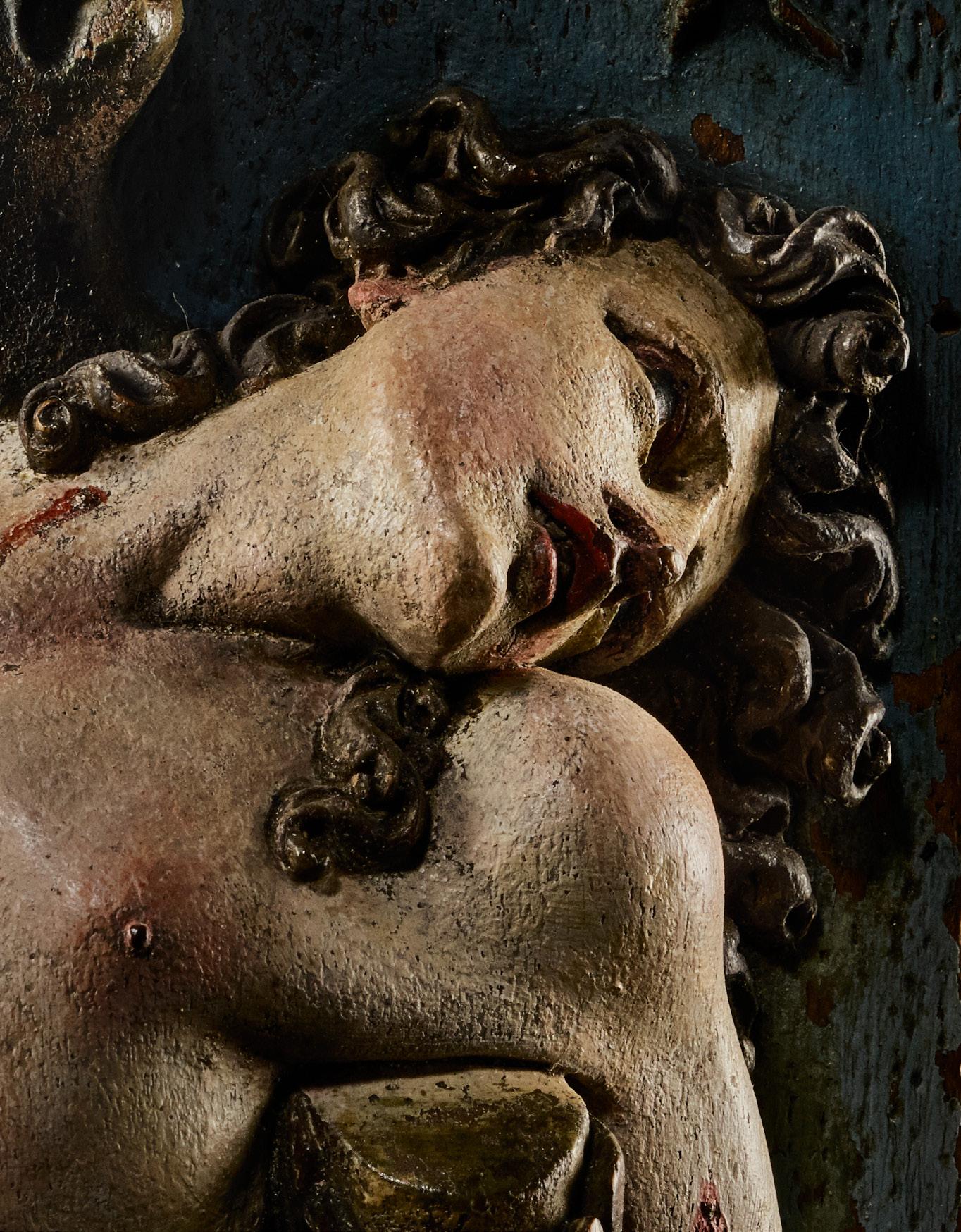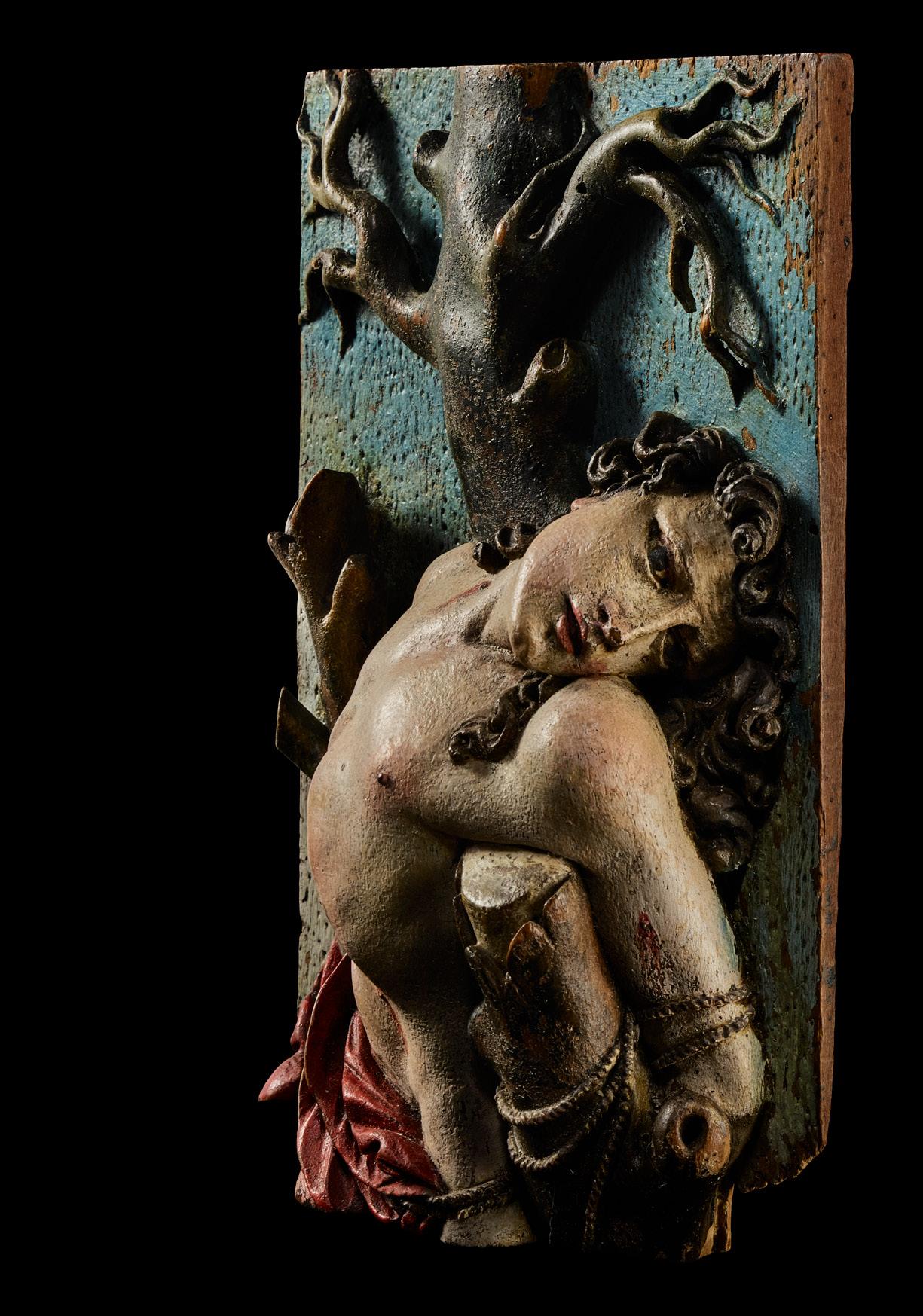
4 minute read
22 Relief of Lot and his Daughters, attributed to Daniel Neuberger the Younger
from JB Test 01/22
There are three reliefs carved in stone with the same composition that exist: one is a marble relief in the Staatliche Museen zu Berlin and two almost identical alabaster reliefs are to be found in Schloss Löwenburg, Kassel, and in the Herzog Anton UlrichMuseum, Braunschweig (Brunswick, fig. 1). Aleksandra Lipinska argues that all three reliefs were created by the same sculptor who probably came from the Netherlands and was active in Germany in the middle of the 16th century. 2
Another composition addressing the same subject is a bronze relief that is now in the Kunsthistorisches Museum in Vienna. It was made in the imperial foundry by Balthasar Heroldt. Heroldt worked in Vienna from 1654 onwards as a ‘weapon or bronze caster’ 3 where he earned 400 fl. In a list with works that he cast in 1657 for the imperial ‘Kunstkammer’, a relief with ‘Lot and his Daughters’ is mentioned that can be identified as the relief in the collection of the Kunsthistorisches Museum in Vienna. As in the case of our wax relief it has a rocky background whereas the other versions made of stone depict the burning of Sodom in the distance. The details in the bronze and wax reliefs also show a number of similarities such as the armlet worn by the daughter on the left, the cloth pulled up over the upper arm on the right and the shape of the vessel. Even the dimensions are identical. Neuberger and Heroldt both worked at the court in Vienna at the same time and certainly knew each other. It can also be assumed that Heroldt, who made his casts based on the works of other artists, picked up Neuberger’s subject. Whether Neuberger based his work on a print or whether he was familiar with the Berlin relief which has the same dimensions, is unknown. Whatever the case, Neuberger modernised and modified the composition of the marble relief which had been created 100 years previously.
Advertisement
Daniel Neuberger the Younger worked as a sculptor and wax embosser in Augsburg, Regensburg and Vienna. From 1661 he worked as wax embosser at the court of Emperor Ferdinand III and received a monthly wage. Among other works, he created 110 small wax reliefs for Ferdinand III with scenes taken from Ovid, on which his daughter Anna Felicitas also worked. These reliefs are now in the Kunsthistorische Museum in Vienna.
22

RELIEF OF SAINT SEBASTIAN
CHRISTOPH DANIEL SCHENCK attributed to Constance, 1633-1691
Circa 1680
Fruitwood, with the original polychromy Height: 15.5 cm, width: 11.3 cm
Provenance: Private collection, South Germany.
Related Literature: Christoph Daniel Schenck 1633-1691, exh. cat. Konstanz/Freiburg/Stuttgart, Sigmaringen 1996.
23
Saint Sebastian, in extreme pain, is bound with his back to a tree; both arms are pulled backwards and are tied to the stumps of branches with ropes. The position of his arms forces the saint, shown only as a half-length figure, to twist his naked torso which is covered with bleeding arrow wounds. His head leans to the side and back; his eyes look heavenwards. In addition to the martyrdom, conveyed through the saint’s expressive features, Schenck accentuates the young man’s youthful beauty through the head of curls and the red lips.
Among the works definitively attributed to Christoph Daniel Schenck there are several depictions of St Sebastian. The most important is doubtlessly the so-called ‘Stuttgart Sebastian statuette’.1 The ivory figure is signed by the artist and dated – the blackened engraving on the stone at the saint’s feet reads: C.D. Schenck / inv et sculpt. / 19. Nov. Anno 1675 / Constantiae. The masterly execution of pathos, the expression of suffering borrowed from Laocoön and the full head of hair are striking. Behind this is the artist’s intention to shock the pious viewer to the core when faced with the tormented martyr in his role as the imitatio Christi. To move believers emotionanally and lead them to the ‘true faith’ of the Catholic Church, was an artistic concept of the Counter-Reformation used to great effect.
Compared to the so-called ‘Stuttgart Sebastian statuette’of Sebastian mentioned above, our relief is probably created later. Schenck makes use of the stylistic motifs available with masterly confidence: the martyr’s tree, suggesting a landscape, is set against a blue background covered with punchmarks -which are typical of many of Schenck’s works – and that simultaneously creates a spatial architecture for the pictorial surface. The head, dramatically stretched backwards, is modelled once again on the figure of Laocoön, to which Fritz Fischer refers in the exhibition catalogue of works on Christoph Daniel Schenck.2 The motif here, however, is artistically further refined.
1 Christoph Daniel Schenck, exh. cat. 1996, op.cit., cat. no. 1, pp. 114-16, color plate 1 2 Ibid. p. 116











